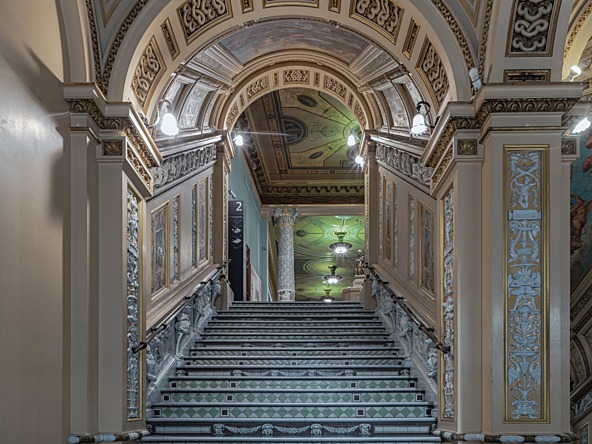The missing fifth: Attracting older generations back to cultural venues

There has been a mindset shift amongst older audiences. Since the pandemic, people aged 55+ are enjoying more home-based lives. Combined with the cost-of-living crisis and the hassle of travel, they are now more risk averse and discerning about what cultural activities they attend.
There are currently 20.42 million people aged 55+ in Great Britain equating to a third of the population (ONS Census, 2021 ). Ranging from those in work to retirees and from parents to grandparents, this is a sizeable and diverse market for the cultural sector.
Research conducted by Morris Hargreaves McIntyre on behalf of a consortium of cultural organisations, led by the V&A and sponsored by ALVA (the Association of Leading Visitor Attractions) has revealed that a fifth of older people who were culturally engaged before the pandemic have failed to return post-Covid-19. This equates to 3.45 million people. Even those who have returned to cultural venues are visiting less frequently. Perhaps surprisingly, the loss has been felt equally across the full age range ( 55-100 ) rather than within one age group in particular.
The loss has been felt across a wide range of cultural activities, with the greatest declines seen among performance venues, museums and art galleries. The survey of over 1,000 adults aged 55+ living in Britain showed that their attendance at classical concerts, dance, opera, plays and musicals, had halved in the three years since Covid-19 in comparison to the three years pre-pandemic.
Visitation to paid exhibitions at museums and art galleries had decreased by 66% and visits to free permanent collections by 42%. The research and discussion with ALVA members shows that this is a nationwide phenomenon affecting smaller towns and cities, such as Bristol, as well as London.
As a result of the Covid-19 related lockdowns, 51% of survey respondents feel they have got out of the habit of visiting cultural venues. However, they are not in a rush to return. For many, they enjoy their new lives. One 56-year-old interviewee said “I certainly don’t do as much as I used to do. It seems to be a simpler life, … it wasn’t as though I was living a life I didn’t like … [but it has changed] in a positive way”.
Crowding and the unreliability of public transport means that visiting a cultural venue is now seen as a hassle. In the survey, 58% felt that getting to venues by public transport is a hassle and 44% that venues are too crowded.
Consequently, many older people are prioritising new hobbies and family and domestic activities over attending cultural venues. 41% of survey participants said they had taken up new hobbies during the pandemic that they would rather continue with than attend cultural venues, particularly local outdoor activities such as walking. This may be why attendance at historic houses and gardens has not decreased to the same extent as other cultural venues. Attendance at historic houses and gardens has decreased by around a third (-37%) and a quarter (-26%) respectively.
At the same time, financial concerns have increased. In the survey, participants were asked to indicate whether a range of barriers were factors impacting their cultural attendance. The top three barriers were all financial – increased cost of tickets to performances/exhibitions ( 77%); increased cost of living meaning they have less disposable income ( 73%); and increased cost of transport ( 67%). Cost was a particular barrier for the younger age of the spectrum as they are more likely to still have mortgages to pay and commuting costs.
Cultural spending is now seen as a luxury rather than a necessity so older people are being more careful in choosing what to see. They are being more risk averse – avoiding new experiences in favour of tried and tested ones. They are more likely to attend cultural genres they know and like; performances and exhibitions of artists that are well known; and return to venues they are already familiar with.
This was seen with the V&A South Kensington’s recent Donatello exhibition where 64% of the audience were aged over 55. As one 77-year-old participant explained “because we are not going as often, we tend to pick shows we are pretty certain we’re going to enjoy, whereas before we may well have said ‘oh, we’ll try that. We’ll see what it’s like.’ So we’re more choosy about the shows we go to”.
In response, venues could consider: programming well known content; cross-cultural promotions, for example, encouraging audiences to combine an exhibition with a theatre show; and incentivisation, such as discounted tickets, particularly for less well-known content.
Emphasising the health and wellbeing benefits of cultural participation may also prove beneficial as they prefer their new quality of life. To tempt older audiences back to cultural venues, they need to feel the experience and outcomes are worth the hassle.
Marie Hobson is senior audience research and insight manager at the V&A

We hope you enjoyed this article.
Research Live is published by MRS.
The Market Research Society (MRS) exists to promote and protect the research sector, showcasing how research delivers impact for businesses and government.
Members of MRS enjoy many benefits including tailoured policy guidance, discounts on training and conferences, and access to member-only content.
For example, there's an archive of winning case studies from over a decade of MRS Awards.
Find out more about the benefits of joining MRS here.












0 Comments